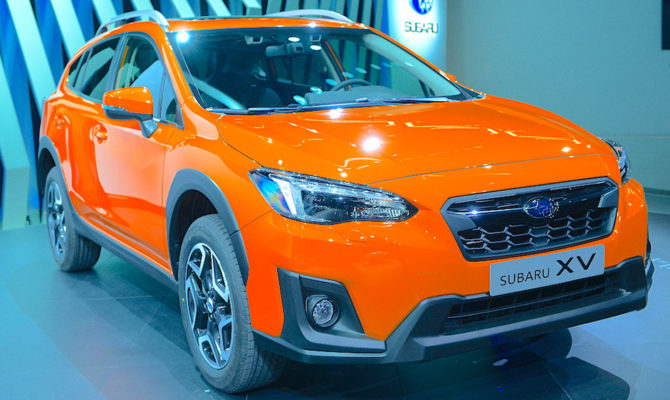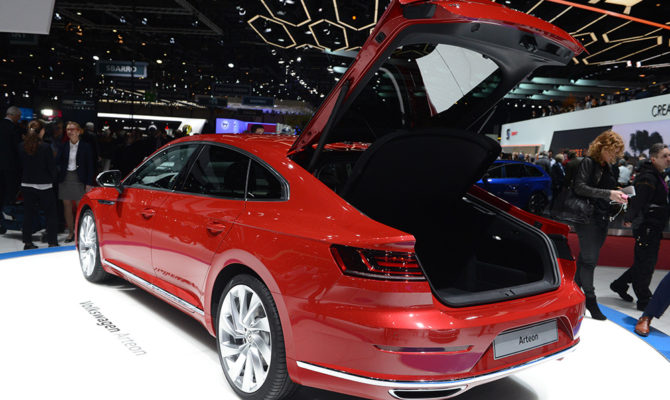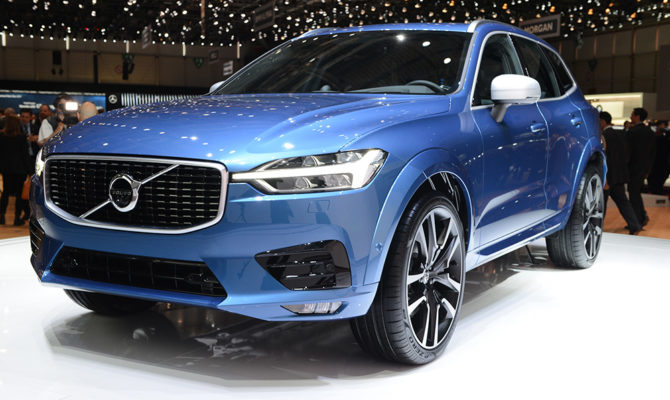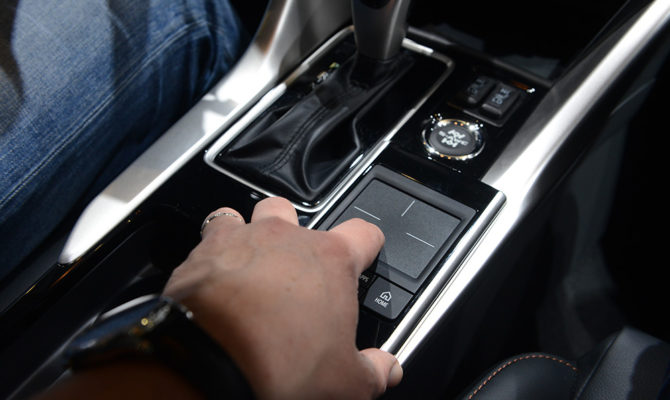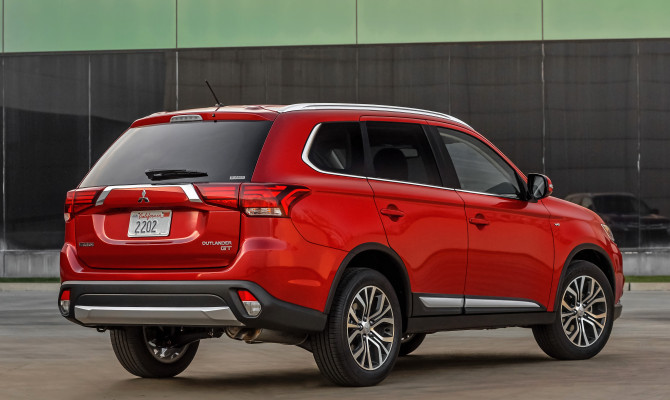Geneva, Switzerland –The second largest auto show on the European calendar is staged in scenic and historic city on the lake bearing the same name.
Typically, many cars are unveiled here that just don’t make it to our side of the pond but this year was different – several notable reveals will make it here.
Subaru Crosstrek
The Subaru Crosstrek has been a huge hit for Subaru with the highest satisfaction among Subaru owners ever since the original arrived in 2013. The all-new Crosstrek is built on the same Global Platform as the recent Impreza. The goal was to make a much more sophisticated driving car with world class safety. Another major selling feature of Subaru cars is the advanced safety suit called Eye Sight which is available, plus the introduction of dynamic headlamps with auto high beam and low beam. The goal was to achieve the IIHS Top Safety Pick Plus with these new features. The new platform is much more rigid and with a 2.0L direct injection 4-cylinder, standard all-wheel drive and an impressive 220mm of ground clearance, this go anywhere crossover is targeted for city dwellers who like to head out of town on the weekend. The new Crosstrek arrives this summer.
VW Arteon
VW is back in the big car market with a stylish GT sedan with impressive design and a practical layout. The Arteon is a mid-to-full-size four-door sedan with a coupe-like roofline and hatchback layout; like Audi’s A7. Built on an elongated platform shared with the Golf and upcoming Atlas SUV, the Arteon is a foray into the premium space. The Arteon will go on sale in Europe later this year with standard AWD and six available engines. For the Canadian market expect to see the Arteon arrive next year. Engines have not been announced for the Canadian market but a good bet would be a turbo 4-cylinder base engine and an optional V6, as has been announced in the Atlas SUV.
Range Rover Velar
The Velar is based on the same platform as the F-Pace Jaguar cousin but has a design that is all Range Rover. This stunning SUV is placed between the Evoque compact SUV and the Range Rover Sport. For the Canadian market it will be priced, starting at $62,300, which is $12,000 more than the F-Pace. It will be available with a turbo 4-cylinder diesel or a 380hp supercharged V6. Unlike the F-Pace the Velar will be available with an adjustable air suspension for off-road duties. The interior is much more polished than the F-Pace featuring two 10-inch centre screens for car controls and infotainment readouts. The rather sparse interior of the F-Pace is replaced with cloth and quilted accents that do look more upscale. The exterior of the Velar is like the Range Rover Sport and due to the popularity of that vehicle, this smaller option will be a massive hit for Range Rover. The Velar will be available this summer
Volvo XC60
Volvo has been on a vehicle renaissance lately with the highly successful XC90 crossover winning the North American SUV of the Year award last year. For 2017 Volvo hopes to capture lightning in a bottle twice with the smaller XC60. This new version will be available before the end of the year and should be a hit because it looks and shares many of the same components with the award winning larger sibling. The same turbo and supercharged 4-cylinder engine is standard with an available plug-in hybrid model. The interior features the same layout and the same level of finish is present. With a smaller and more agile footprint, plus Volvo’s reputation for advanced safety features will help accelerate the rented interest in the Volvo brand.
Mitsubishi Eclipse Cross
Some might remember the Mitsubishi Eclipse name on a car but the trend these days is to crossovers, so the name has been resurrected on the latest model called Mitsubishi Cross. This all-new crossover will sit between the RVR and Outlander models in size. With a turbocharged 1.5L 4-cylinder engine and continuously variable transmission, the target might be the Honda CR-V with similar tech. The design is sharp and looks like a fastback from some angles. The rear styling is edgy and might be a bit polarizing. The interior is a major step forward with a touch-pad controller for the new centre screen and the materials look fresh and upscale. The Eclipse Cross will arrive towards the end of this year.
The engineers let us try an autonomous version of the PHEV that not only finds and parks itself but also selects gears from reverse, to forward and even park.
“It is good to see that Mitsubishi is moving back to a more aggressive looking utility vehicle.”
Whistler, B.C.
The Mitsubishi Outlander is a bit of an anomaly in the compact utility market.
While most manufacturers sell 4-cylinder or turbocharged 4-cylinder version in great number, it’s the V6 equipped Outlander that is the best seller here in Canada – totally against the current trend. It might be that the previous V6 version was more refined, quieter and had a conventional 6-speed automatic transmission, compared to the rather loud, lacklustre 4-cylinder model. Well, for 2016 Mitsubishi wants to build on the success of the V6 model and try to sell more 4-cylinder versions by paying attention to styling, refinement and drivability.
Looks
The last update for the Outlander was just two years ago and it is good to see that Mitsubishi is moving back to a more aggressive looking utility vehicle. Not all small crossovers need to look aggressive but the previous model was so devoid of personality, it blended into the background. The updated 2016 model comes with a whole new front grille treatment, front pumper, even available LED headlamps and tail lamps. Mitsubishi might be accused of borrowing from the recent Lexus front design; the bold chrome accents do look similar to the Lexus Spindle grille. Along the lower part of the doors is a metallic trim piece that helps break up the body. The top GT trim is the one that gets standard 18-inch wheels but they can be ordered on lower trim levels as an option. Same for the power tailgate, it is reserved for the top V6 GT trim.
Inside
The Outlander competes with the Nissan Rogue and Kia Sorento for buyers wanting a seven-passenger, three-row compact crossover. Unlike the 4-cylinder Nissan, the Outlander only offers seating for seven passengers in the V6 models, so the Sorento is the closest competitor. Both share roughly the same dimensions too. The updates to the back seats include a much easier to fold second row of seats and the third row is still best for small children and only for shorter trips. The other changes are the new thicker steering wheel with chrome trim around the centre and new switches. The display audio screen has been updated to provide redundant tabs and switches around the outside; this treatment has also been used on navigation-equipped cars. Overall the cabin is well designed and roomy especially for the first two rows of seats. 4-cylinder models get a useful storage area under the rear cargo floor, the space used to store the third row seats in V6 equipped models.
Drive
Another reason that Canadians opted for the V6 models in the previous version was the much better driving experience, something that needed, and was, improved for 2016 4-cylinder trim levels. There is new acoustic glass to remove road and wind noise, more insulation between the cabin and the engine compartment and attention paid to the continuously variable transmission (CVT). Mitsubishi claims that the updates to the 4-cylinder transmission reduce friction and the wider range of available ratios helps this vehicle make a run to 100km/h one second faster than the previous 4-cylinder. The 166hp 2.4L 4-cylinder engine has been carried over but the improvements made to this model have transformed this Outlander. It has gone from a rough and ready vehicle to a refined, quiet and pleasurable place to spend time. The 224hp 3.0L V6 is still the one to get if you want to tow up to 3500lbs. and the inclusion of a conventional 6-speed automatic makes driving a more predictable experience but this version felt heavier and didn’t handle nearly as well as the 4-cylinder.
Verdict
The 2016 Outlander starts $25,998 for a FWD 4-cylinder model. The base 4-cylinder AWD starts at $27,998. All V6 equipped Outlanders come standard with AWD and 7-passenger seating and the starting price is $31,198. The most expensive GT trim tops out at $38,498. Mitsubishi is introducing a new trim for the 2016 model year that includes a lot of the higher end features found in the V6 but offer it in a 4-cylinder model. It is the ES Touring with a power sunroof, 18-inch wheels, display audio, satellite radio and few other goodies and it starts just under $30,000. Mitsubishi hopes this model, along with the other improvements to the vehicles refinement will win new buyers over. The Outlander competes with a vast field of small utility vehicle but the 7-pasenger V6 offer is what sets it apart; that and the impressive 10-year warranty.
Contact the writer at zack [dot] spencer [at] drivewaybc [dot] ca
The Lowdown
Power: 166hphp 2.4L or 224hp 3.0L V6
Fill-up: 9.9L/8.1L/100km (city/highway 4-cylinder)
Sticker price: $25,998-$38,498






by Matt Lewis, Driveway
With winter still hitting some northern regions of the country, it seems only right to highlight some of the lesser-known AWD vehicles from our automotive past.
Completely by accident, this list starts with attractive vehicles, and it is downhill from there!
Toyota Celica GT-Four All-Trac Turbo
One of my favorite lesser-known AWD vehicles, the Toyota Celica GT-Four All-Trac Turbo, was not only attractive but packed a punch compared to the standard Celica seen in many high school parking lots. The intercooled turbo four-cylinder engine was capable of producing over 200 hp and 200 lb-ft. Plenty of power for helping you through some snow drifts on your way to work, or getting air over some crests in a rally stage.
Mitsubishi Galant VR-4
Sitting on top of the Galant line, this Evolution predecessor was limited in the USDM to only 3,000 units reaching our shore from 1991-1992. Any owner of the Galant VR-4 will proudly show you the production number plate on the dash. While the stock 237 hp from the factory is nothing to be ashamed of, the tuner favorite 4G63T engine is capable of making this an alarming sleeper car.
Honda Civic Wagovan AWD
I don’t know which I love more — the prospect of an AWD Civic (I’m a fan) or the fact that they named this the Wagovan. While you won’t be passing any other car on this list while driving one, you will get a fair number of people commenting, “I’ve never seen one of these.”
AMC Eagle Kammback
Any list of odd AWD vehicles is going to include the Eagle wagon. But if you want to get even weirder, here is the Kammback. Utilizing the aerodynamics derived from Wunibald Kamm, the Eagle Kammback was available for two whole years. AMC dropped the Kammback in 1983 due to slow sales after only 6,123 made it to the streets.
Toyota Previa S/C AWD
Okay, this is not a car, it’s a van but it’s undeniably cool. Toyota decided to produce a jellybean, then super charge it and push the power to all four wheels. The Roots-type supercharger provided 6psi through the air-to-air intercooler pushing the 2.4-litre four cylinder to an “impressive” 160 hp.
Pontiac 6000 STE AWD
For a whole two years Pontiac offered the 6000 STE that could turn all four wheels. The standard 3.1-litre V-6 had 135 hp. Not a crazy amount, but still enough to get you down the road in 1988. With hopes to compete with BMW and Audi, the Special Touring Edition fell short in multiple categories.
*Matt Lewis writes for Hagerty Insurance. Hagerty is the world’s leading specialist provider of classic car and boat insurance. Learn more at hagerty.ca.
The attrition rate of cars from the mid-disco to late Reagan-era is huge.
And while it would be great to see someone somewhere driving any one of the cars on this list, in truth, it’s hard to remember the last time anybody was seen driving any of them.
Here are my five favourite nearly extinct cars…
1971-77 Mercury Capri
Few people remember the 1980s Fox-body Mustang’s near-identical twin, the Mercury Capri. Fewer still can recall the Australian-built front-wheel-drive convertible Capri. This isn’t either of those cars— it’s not even the first to wear the Capri badge. It’s the German Ford mini-Mustang Capri. Sold in the U.S. through Mercury dealers and marketed as “The Sexy European” with an assortment of four- and six-cylinder engines, it was nice looking and great to drive—at least we’re assured of this from vintage road tests. One Capri recently offered on Bring-a-Trailer.com was the first that we’ve seen in ages.
Chrysler Conquest/Mitsubishi Starion
The Conquest was the captive import twin of the Mitsubishi Starion. In the hottest turbo spec with 197 HP, these cars would put the fear of God into Porsche 924/944 owners who had the privilege of paying almost twice as much for less performance.
Where have they all gone?
1969-75 International Harvester Travelall
The Travelall was the Scout’s big brother, and while Scouts are still regularly seen (particularly in the summer with tops off), the Travelall has all but disappeared. In reality, it was one of the pioneers of the modern SUV and one of the first vehicles to offer anti-lock brakes. Sadly, it was completely overshadowed by the Jeep Wagoneer.
Chrysler Laser/ Dodge Daytona Z Turbo
The K-car platform saved Chrysler in the 1980s and underpinned nearly everything that they built, including the sporty Laser/Daytona twins. The car was nowhere near as bad as the foregoing would suggest; 2.2- and 2.5-liter turbo fours produced anywhere from 175 HP to 224 HP in their hottest states of tune. Carroll Shelby versions of the Daytona are somewhat collectible, assuming you can find one.
1975-81 Volkswagen Scirocco MKI
The Scirocco was the spiritual successor to the Karmann-Ghia. It followed the same formula of a pretty Italian body over more pedestrian underpinnings (in this case a body designed by Ital Design clothing Rabbit-derived mechanicals). No matter, it was a decent handler and quick enough for the day. Today, there are probably more Bentley Continentals on the road than MK I Sciroccos.
**********
Rob Sass is the vice-president of content for Hagerty Insurance. Hagerty is the world’s leading specialist provider of classic car and boat insurance. Learn more at hagerty.ca and you can email rsass [at] hagerty [dot] com












Even though we have high fuel prices in Canada, the trend is away from small fuel-efficient cars to larger vehicles.
Subcompact and even compact sales are down but sales of small SUVs and even mid-sized vehicles are up. There are a couple of things at play here. The first is the stronger (although maybe not so much in the last couple months) Canadian dollar which, over the last several years, has allowed carmakers to jam more content into their cars and often the retail price has dropped too.
The second is that vehicles are becoming more fuel efficient, so buying a slightly bigger car isn’t much of a hardship. With this as a backdrop, it is interesting to see that Mitsubishi has introduced a three-cylinder fuel saving car at the smallest end of the market.
Looks
The Mirage is sold in two trim levels; the base starts at $12,498 and comes pretty sparsely equipped. It’s a small car with a little price tag.
The much bigger Nissan Versa is cheaper at $11,898 and has buckets more power. The car that most people will choose is the Mirage SE with many more goodies but the price jumps dramatically to $15,398 and with the automatic transmission it lands at $16,598.
At this price, there are plenty of options in the subcompact class. Styling is not what I would car eye-catching.
Cars like the Ford Fiesta or the Kia Rio have much more appeal and features for similar money to this SE Mirage.
Inside
On the plus side, the Mirage SE does come nicely equipped.
The front driver’s seat has adjustment and both front seats have very good seat heaters that bring your backside up to the appropriate temperature in short order. The centre cluster is nicely finished and it features Bluetooth with streaming audio. There is an auxiliary jack but no USB jack to charge your phone.
The back seat is small and the rear cargo area is what one might expect from a little car. But this vehicle does not live in a vacuum.
The Kia Rio, with more features, like satellite radio, is only a $1,000 more and is way up on space and horsepower. The Nissan Versa Note is massive in comparison and for $1,700 more has push button start and even a backup camera.
So yes, the Mirage is nicely equipped and has a good price, but there are other options out there that are as good if not better.
Drive
What this little car was designed to do is deliver impressive fuel economy.
This is achieved by placing a 3-cylinder engine under the hood and matching it to either a 5-speed manual transmission or a continuously variable transmission (CVT). With just 74hp, this car is way down on power compared to the rest of the subcompact set, even the Fiat 500 has 101hp and the Nissan Versa has 109hp. This combination of small packaging and small engine deliver a rating of 5.3L/100km in the city and 4.4L on the highway. In my mostly city driving I was achieving 7L/100km.
The problem with such a small engine is that it often needs to be pushed hard to accelerate and pass other traffic.
The engine and CVT are loud, especially when the car is cold. The steering is very light for easy maneuverability but at higher speeds it feels too vague. This car is happy cruising because the engine settles down to a lower RPM and the noise level drops.
Ask this car to perform and it’s an experience filled with noise and vibration.
Verdict
With a very low starting price and potentially good fuel economy the basic Mirage has a place for a buyer who wants a basic runabout that sips gas but if the trend away from small cars is any indication, that will be a small number.
Contact: zack [at] drivewaybc [dot] ca
The Lowdown
Power: 1.2L 3-cylinder with 74hp
Fill-up: 5.3L/4.4L/100km (city/highway)
Sticker price: $12,498-$15,398





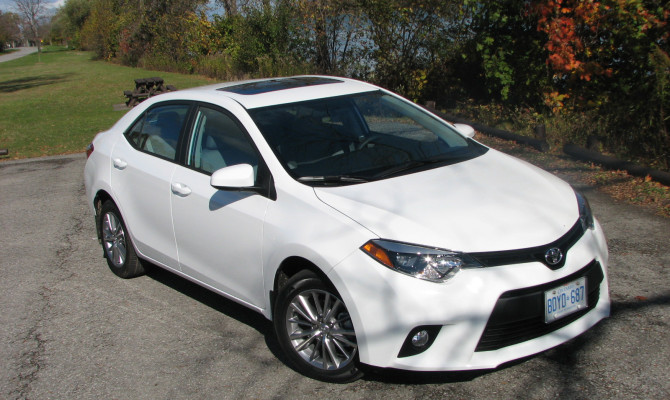
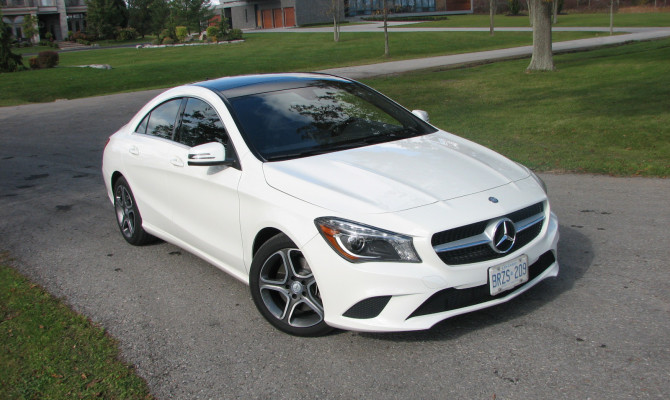





Driving 30 vehicles in three days does leave one exhausted with a numb bum!
But that’s what 80 auto journalists – including yours truly – endured last week (more…)
Recent Comments
- { Enjoyed your Forest of Bowland in the BMW X5M, particularly the photo of the BMW in front of the main part of Stonyhurst College where... }
- { Bantam designed the Jeep, not Willy's or Ford. The American military gave the original Bantam prototype to Willys and Ford to copy. There is plenty... }
- { All Escalades come with a 6.2-lilter V8 engine that produces 420 horsepower. A six-speed automatic is the only transmission offered and drives the rear wheels.... }
- { Alexandra is an excellent journalist. }
Popular Posts
- Journey to a ‘Sparkling’ Luxury Okanagan Resort “Four lucky readers will put a Dodge Journey’s weekend-...
- The Need For Speed: Hike Those Highway Limits More than half of those polled believe the province sho...
- Drives-U-Crazy… Erratic drivers. An early morning drive from Kelowna to Vancouver is nor...
- Readers Respond: The Pros and Cons of Increasing B.C. Speed Limits Increasing the speed limits will only increase risk to...
- Honda CR-V Review: The Compact Crossover To Get Things Done The CRV is a very stylish and aerodynamic crossover veh...


